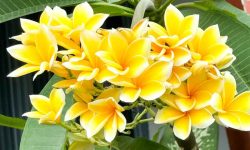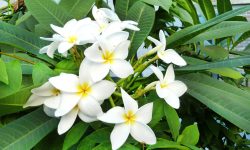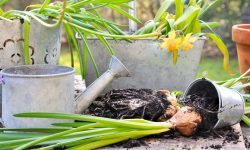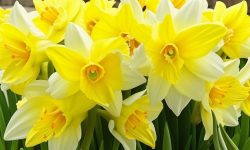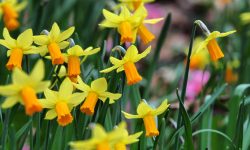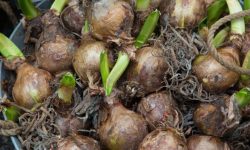Echinacea, also called coneflower, is prized for its beauty and medicinal benefits. Its vibrant flowers attract bees, butterflies, and other pollinators. Beyond aesthetics, echinacea offers valuable properties for teas, tinctures, and natural remedies. Harvesting at the right time ensures maximum flavor and potency. Proper techniques help gardeners and herbalists preserve the plant’s strength and effectiveness. Knowing when and how to harvest allows you to enjoy both a thriving garden and a rich source of herbal wellness.
Timing and method are essential for successful harvesting. Flowers, leaves, and roots each reach peak potency at different times. Picking too early or late can reduce flavor and medicinal value. Gentle handling and clean tools prevent damage and disease. Following the right practices ensures echinacea remains healthy, productive, and potent. With careful attention, you can enjoy stunning blooms and the full benefits of this remarkable perennial year after year.
Understanding the Echinacea Growing Cycle
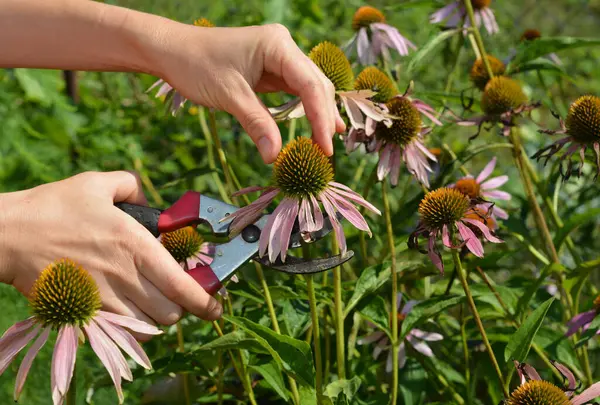
Echinacea follows a seasonal growth cycle that determines when it is strongest and most potent. The plant begins its life in early spring, sending up tender shoots as soil temperatures rise. During this period, the plant focuses its energy on developing leaves and stems to prepare for future flowering. Young plants require consistent moisture and sunlight to establish a robust root system. Understanding this initial growth stage helps gardeners anticipate the best times for pruning, fertilizing, and harvesting leaves later in the season.
As spring turns to summer, echinacea enters its flowering phase. This stage is critical for both garden aesthetics and medicinal use. Flowers reach peak color and aroma when fully open, usually in mid to late summer. Leaves continue to develop and provide additional herbal value. Gardeners should monitor bloom timing closely, as picking flowers at peak maturity ensures maximum flavor and potency. Proper care during this stage, including watering, pest control, and occasional deadheading, promotes a longer flowering period and healthier overall growth.
In late summer and fall, echinacea transitions into energy storage for the winter months. Roots thicken and accumulate nutrients, preparing the plant for dormancy. This is the optimal period for harvesting roots, as they contain concentrated compounds. Above-ground foliage begins to die back naturally, signaling the end of the active growth cycle. Understanding the full growing cycle allows gardeners to plan harvesting strategies that maximize flavor, medicinal benefits, and plant longevity. By aligning care and harvest practices with the echinacea cycle, gardeners ensure vibrant blooms and potent herbal resources year after year.
Knowing When to Harvest Echinacea
Timing is crucial to harvest echinacea for maximum flavor and potency. Different plant parts peak at different times. Flowers are best in mid to late summer, showing full color and aroma. Leaves reach peak strength just before flowers open, providing concentrated medicinal compounds. Roots are most potent in late fall, after the plant stores energy for winter dormancy. Harvesting too early or late reduces both flavor and effectiveness. Understanding the ideal timing ensures echinacea delivers the greatest benefits for teas, tinctures, or other preparations. Proper timing also supports plant health and encourages regrowth for future seasons.
For flowers and leaves, early morning is often best, after dew evaporates but before heat rises. Essential oils and antioxidants are most concentrated then. Use clean, sharp scissors or pruners to snip flower heads and leaves carefully without harming stems. Leave some flowers and leaves intact to promote continued growth and extend blooming. Regular observation allows picking only the most mature and potent parts. This careful approach ensures high-quality herbal material while maintaining overall plant health.
Roots should be harvested in late fall when nutrient storage is highest. Loosen soil gently with a trowel or fork to protect the root system. Shake off excess dirt and avoid aggressive washing to preserve active compounds. Harvest only part of the roots if you want the plant to survive and regrow. Dry roots in a cool, ventilated area to maintain potency and prevent mold. Following these practices ensures flowers, leaves, and roots provide strong medicinal benefits, flavorful additions, and a sustainable plant for years to come.
Best Techniques for Harvesting Echinacea Safely
Harvesting echinacea safely ensures the plant remains healthy while preserving its flavor and medicinal properties. Using clean, sharp tools is essential to prevent infection and minimize damage. Scissors, pruners, or garden knives work best for flowers and leaves. Roots require a trowel or garden fork to loosen soil gently without breaking or bruising them. Always wash tools before and after use to reduce the risk of spreading disease. Proper technique not only protects the plant but also maintains the quality of harvested material. Handling echinacea gently prevents crushing stems or leaves, preserving essential oils and antioxidants for maximum potency.
When harvesting above-ground parts, select only healthy, mature flowers and leaves. Avoid damaged, diseased, or overly aged plant material. Cut flowers above the first set of leaves to encourage further growth and prevent weakening the plant. Leaves should be plucked carefully, leaving enough to allow photosynthesis and continued development. For roots, dig around the base carefully and lift the plant slowly. Remove soil without washing aggressively to maintain compounds. Safe handling reduces stress, allowing the plant to recover quickly and continue thriving in future seasons.
Drying and storage are also part of safe harvesting. Flowers and leaves should be dried in a cool, ventilated area away from direct sunlight to prevent degradation. Roots should be dried slowly on racks or in shallow trays to preserve potency. Store dried plant parts in airtight containers to protect against moisture and pests. By combining careful cutting, gentle handling, and proper storage, gardeners and herbalists can ensure echinacea remains safe, healthy, and highly effective for teas, tinctures, and other uses. Safe harvesting maximizes both plant longevity and medicinal benefits.
Drying and Storing Echinacea
Drying Echinacea
Proper drying preserves echinacea’s flavor, medicinal compounds, and aroma. Fresh flowers, leaves, and roots hold moisture that can cause mold if ignored. Spread flowers and leaves in a single layer on clean, ventilated trays. Avoid direct sunlight to prevent color and potency loss. Air circulation is critical to ensure even drying and reduce spoilage. Roots, being dense, take longer and should be placed on shallow racks or trays. Temperature should remain consistent, cool, and dry. Gentle handling during drying protects essential oils and bioactive compounds. Patience is important, as uneven drying can reduce effectiveness.
Monitoring the process ensures the plant material dries correctly. Flowers and leaves usually crisp within a few days. Roots may require two to three weeks depending on size and thickness. Check regularly for soft spots or mold. Over-drying can make leaves and flowers brittle, while under-drying promotes spoilage. Adjust air circulation or tray spacing if needed. Proper drying techniques increase shelf life and preserve flavor. When done correctly, dried echinacea is ready for teas, tinctures, or other herbal preparations. Consistent attention to temperature, airflow, and moisture is essential for high-quality results.
Storing Echinacea
Correct storage maintains echinacea’s potency, aroma, and medicinal benefits. Dried flowers, leaves, and roots should be placed in airtight containers to protect against moisture, pests, and light. Glass jars, sealed bags, or metal tins work well in a cool, dark, and dry space. Heat and sunlight degrade antioxidants and essential oils. Label containers with the harvest date to track freshness and effectiveness. Stored properly, echinacea can remain useful for many months or even years, providing a reliable herbal resource.
Regularly inspect containers for signs of mold, moisture, or pest activity. Avoid opening containers frequently, as exposure to humidity and air reduces potency. Keep storage areas clean and consistent in temperature. For long-term use, consider vacuum-sealing or using desiccant packets to maintain dryness. Proper storage ensures all plant parts retain flavor and medicinal qualities. Combining careful drying with good storage allows gardeners and herbalists to enjoy high-quality echinacea year-round while promoting sustainable use and minimal waste.
Preparing Echinacea for Teas, Tinctures, and Other Uses
Using Echinacea for Teas
Echinacea flowers and leaves are excellent for herbal teas, offering both flavor and medicinal benefits. Dried material is preferred, as it retains compounds better than fresh parts. Measure the desired amount and steep in hot water for 5–10 minutes. Cover the cup or teapot to retain volatile oils, which carry active compounds. Drinking echinacea tea regularly may help support immunity and soothe minor ailments. For stronger flavor, combine leaves and flowers in a single cup. Teas can be enjoyed hot or cold, depending on preference.
Fresh leaves can be used, but steeping may take longer to release compounds. Using a teapot or French press ensures even extraction. Adjust the amount of plant material for desired potency. Avoid boiling, which can degrade essential oils and antioxidants. Strain tea before drinking, and store any leftovers in a covered container for short-term use. Consistent preparation and proper steeping maximize medicinal benefits while keeping flavor pleasant. By following these methods, gardeners can enjoy echinacea tea throughout the year with high quality and potency.
Preparing Tinctures
Tinctures are concentrated herbal extracts, typically using alcohol or glycerin. Echinacea roots are ideal because they contain high levels of active compounds. Chop dried roots into small pieces to speed extraction. Place roots in a glass jar and cover with alcohol or glycerin, leaving some space for expansion. Seal tightly and store in a cool, dark area for 4–6 weeks. Shake the jar gently every few days to mix contents and improve compound extraction. After steeping, strain liquid through a fine mesh or cheesecloth into amber bottles to protect potency and light-sensitive compounds.
Leaves and flowers can also be used for milder tinctures. Using a combination of roots and aerial parts enhances both flavor and effectiveness. Tinctures are convenient for dosing and have a long shelf life. Correct solvent choice, alcohol or glycerin, ensures proper preservation. Label jars with plant part, harvest date, and solvent used for easy tracking. By preparing tinctures carefully, gardeners and herbalists can maintain echinacea’s medicinal value while creating versatile herbal products for year-round use.
Making Powders and Topical Uses
Echinacea can be ground into powders for capsules, teas, or culinary use. Use dried roots, leaves, or flowers and grind them with a clean grinder or mortar and pestle. Powders allow precise dosing and can be mixed into smoothies, herbal blends, or teas. Store powders in airtight containers in a cool, dark location to maintain potency. Avoid moisture exposure, which can lead to clumping or mold. Label containers with the harvest date to track freshness.
Topical preparations include infused oils, salves, and balms. Flowers and leaves can be soaked in oil to extract compounds and create soothing skin applications. Roots can also be infused in oils for stronger effects. These products can be applied to minor cuts, insect bites, or dry skin. Proper preparation preserves active compounds while enhancing medicinal benefits. Using powders or topical forms expands echinacea’s versatility. Careful handling and storage ensure potency, flavor, and effectiveness are maintained for long-term use in herbal remedies.
Using Echinacea in Blends and Herbal Formulas
Echinacea blends well with other herbs to enhance both flavor and medicinal benefits. It pairs easily with chamomile, peppermint, or ginger for teas. Combining roots, flowers, and leaves with complementary herbs allows gardeners and herbalists to create balanced formulas. These blends can support immunity, soothe colds, or provide calming effects depending on selected herbs. Measuring each ingredient carefully ensures consistent potency and taste. Preparing blended teas or tinctures maximizes the benefits of each component while producing pleasant, aromatic drinks. Infused oils or salves can also incorporate multiple herbs for topical use. Roots generally offer stronger effects, while flowers and leaves contribute milder flavor and aroma. Adjusting ratios based on taste and potency ensures both efficacy and sensory enjoyment.
Regular experimentation helps refine blends over time. Keeping detailed notes on combinations, proportions, and preparation methods ensures consistency. Observing taste, color, aroma, and effectiveness allows adjustments for better results. Well-planned blends enable gardeners to diversify their herbal products and enjoy a wider range of therapeutic benefits. With practice, these records allow consistent production of high-quality teas, tinctures, or salves. Using echinacea thoughtfully in herbal formulas adds versatility to any garden while supporting wellness naturally, year after year.
Fertilizing and Caring for Echinacea After Harvest
Proper fertilization and care after harvesting echinacea ensures strong regrowth and long-term plant health. Even after leaves and flowers are removed, the plant continues to photosynthesize and store energy in its roots. Applying a balanced, slow-release fertilizer replenishes nutrients used during growth and supports recovery. Organic options, such as compost or well-aged manure, provide essential macro- and micronutrients while improving soil structure. Light fertilization encourages root development, strengthens stems, and prepares the plant for future blooms. Avoid over-fertilizing, as excessive nutrients can cause weak, leggy growth and reduce flowering in the next season. Fertilizing in combination with soil aeration enhances nutrient absorption and overall plant vigor.
Watering remains crucial after harvest. Consistent moisture allows roots to absorb nutrients efficiently, but soil should never become waterlogged. Mulching around the base of plants preserves soil moisture, moderates temperature, and suppresses weeds. Checking for pests and diseases is essential even after harvest, as stressed plants are more vulnerable. Removing dead or damaged leaves and stems improves airflow and reduces infection risk. Light pruning of older stems encourages healthy new growth and prevents overcrowding in the garden bed. Proper irrigation, combined with regular observation, helps echinacea recover faster and maintain vitality.
Seasonal care also plays a key role. In late summer or early fall, cutting back spent flower heads directs energy back to the roots. For perennial varieties, leaving some foliage allows energy storage for winter. In colder climates, adding a protective mulch layer over the crown shields roots from frost and temperature swings. Dividing crowded clumps every few years promotes healthier growth and improves flowering potential. With careful post-harvest care, echinacea thrives year after year, producing strong growth, resilient roots, and abundant, vibrant blooms that enhance both garden beauty and herbal use.
Common Mistakes to Avoid When Harvesting Echinacea
Harvesting Too Early or Too Late
Timing is crucial when harvesting echinacea. Picking flowers or roots too early can reduce potency and flavor. Young roots and immature flowers contain fewer active compounds. On the other hand, harvesting too late may result in brittle stems and faded flowers. These older plants may have lost some medicinal value and aroma. Careful observation of flower development and root maturity helps ensure maximum benefits. Monitor seed heads for signs of full bloom before harvesting flowers. Roots should be collected after the plant has stored energy in the fall for best results.
Early or late harvesting can also affect regrowth. Plants may struggle to recover if too much biomass is removed at the wrong time. Leaves and stems removed prematurely limit photosynthesis and weaken roots. Delayed harvesting may interfere with the plant’s natural energy storage cycle. Planning harvest around optimal growth stages ensures both high-quality material and strong plant recovery. Gardeners who follow proper timing consistently achieve abundant blooms and potent herbal material each season.
Improper Handling and Storage
Handling and storage mistakes reduce echinacea’s quality and shelf life. Crushing or bruising plant material during harvest can destroy essential oils and active compounds. Using dull or dirty tools introduces pathogens that promote spoilage. After cutting, plant parts should be cleaned gently and dried promptly to prevent mold growth. Roots require thorough washing to remove soil and debris before drying. Flowers and leaves need careful placement on ventilated trays or racks for even drying.
Storage is equally important. Dried echinacea should be kept in airtight containers, away from sunlight and moisture. Humidity or heat exposure can degrade potency and flavor. Labeling containers with harvest date helps track freshness. Proper handling from harvest through storage preserves medicinal value and aroma. Gardeners who avoid these mistakes maintain high-quality echinacea suitable for teas, tinctures, powders, and topical uses year-round. Careful attention ensures long-lasting, potent herbal material with minimal waste.
Planning for Future Harvests
Successful echinacea harvesting depends on long-term planning. Keeping track of plant age, flowering cycles, and root health ensures future crops remain productive. Rotating harvest areas within the garden prevents over-harvesting and allows roots to recover fully. Noting seasonal growth patterns helps anticipate peak harvest times for maximum potency. Gardeners should maintain a calendar for sowing, flowering, and harvesting to achieve consistent results year after year. Tracking these details also helps identify trends in plant health and bloom quality, allowing adjustments for better performance.
Soil care between harvests is critical for future growth. Adding organic matter, mulching, and monitoring pH promotes root health and nutrient availability. Fertilization after harvest restores energy used during flowering. Regular watering, even after harvest, helps maintain moisture balance and prevents stress. Avoiding repeated stress ensures the plants remain strong and resilient. Monitoring for pests or diseases and addressing issues promptly protects the garden long-term. This consistent attention to soil and plant care strengthens echinacea for subsequent harvests.
Propagation supports sustainability and garden longevity. Dividing older plants, saving seeds, or starting new seedlings ensures continuous production of high-quality material. Planning for succession planting allows gardeners to stagger harvests, ensuring fresh flowers, leaves, and roots throughout the season. Combining careful planning, soil maintenance, and propagation creates a reliable source of potent echinacea for teas, tinctures, powders, and topical products. With consistent observation and preparation, gardeners can enjoy abundant blooms, robust plants, and maximum medicinal value year after year, building a sustainable and thriving echinacea garden.
FAQ About Harvesting and Using Echinacea
How do I know when echinacea is ready to harvest?
Echinacea flowers are best harvested when fully open but before petals begin to wilt. Roots should be collected in the fall after the plant has stored energy for maximum potency. Observing flower color and root thickness helps ensure the plant is mature and contains the highest levels of active compounds.
Can I harvest echinacea multiple times in one season?
You can harvest flowers and leaves once or twice, depending on plant size and growth. Avoid removing more than one-third of foliage at a time. Repeated harvesting too frequently can stress the plant, reduce root development, and decrease flower quality. Proper timing and moderation ensure healthy regrowth and sustained productivity.
What is the best method for drying echinacea?
Cut flowers, leaves, or roots carefully and clean them gently. Dry plant material in a ventilated, shaded area or use a dehydrator at low temperature. Even drying preserves active compounds, prevents mold, and extends shelf life. Ensure pieces are completely dry before storing in airtight containers.
How should I store harvested echinacea?
Store dried echinacea in airtight containers away from sunlight, moisture, and heat. Label with harvest date for freshness tracking. Proper storage maintains flavor, color, and medicinal potency. Avoid plastic bags that trap moisture, which can cause mold. Glass jars or dark containers work best for long-term storage.
Can I use echinacea in teas, tinctures, and salves?
Yes, harvested echinacea is versatile for teas, tinctures, powders, and topical salves. Roots provide stronger medicinal effects, while flowers and leaves offer milder benefits. Combining with other complementary herbs enhances flavor and therapeutic properties. Proper harvesting and drying ensure maximum potency for all uses.
Conclusion
Harvesting echinacea at the right time ensures maximum flavor, potency, and long-term plant health. Following proper techniques for cutting, drying, and storing preserves active compounds. Combining echinacea with other herbs enhances both taste and medicinal effects. Planning future harvests, maintaining soil health, and caring for plants post-harvest guarantees strong growth year after year. With careful attention and sustainable practices, gardeners can enjoy abundant blooms, versatile herbal products, and reliable therapeutic benefits. By mastering these steps, echinacea becomes a thriving, low-maintenance, and valuable addition to any garden or herbal collection.

